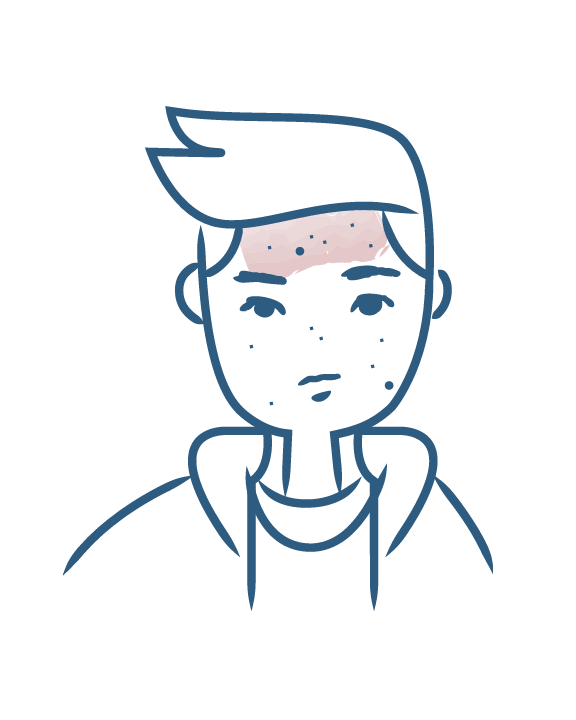What are the different types of acne?
Acne in men
Bad memories of adolescence, such as acne, spots and oily skin can also disrupt the daily lives of many adults. Late-onset men's acne is less common than late-onset women's acne, but adult men's acne is often more severe and more persistent.
What are the signs of acne in men?
There are several signs of acne in men: the most common acne types affect the back, face and sometimes the torso. When acne affects the face, men often grow a beard to hide spots or scars and avoid the gaze of others and their potential comments.
What causes acne in men?
Adult men with acne often have a personal or family history of acne, although this isn’t always the case: acne in a 30-year-old man with no family history is also possible! Thick, oily skin prone to spots is often associated with an increased risk of acne in men. Lifestyle is often the cause: pollution, alcohol, tobacco, and a diet rich in fats and sugars, etc.
What are the treatments for acne in men?
Depending on the severity of acne in men, the doctor prescribes topical or oral medication, skin peels or laser treatment. A man with acne must learn how to take care of his skin. For practical reasons, most men wash their face, body and hair with a single product, usually a regular soap bar. Soap molecules dry out the skin and the skin reacts by producing even more sebum. For cleansing, you should use a mild cleanser that is suitable for acne-prone skin. Once the skin is clean and dry, apply an acne treatment for adult skin. Avoid mechanical shaving and instead use an electric razor, which is less aggressive for the skin. To effectively camouflage a spot before a meeting or a date, use a tinted correction stick.
More information
- Discover Infant acne
What are the different types of acne?
Infant acne
- Discover Nodular acne
What are the different types of acne?
Nodular acne
- Discover Acne fulminans
What are the different types of acne?
Acne fulminans
- Discover Juvenile acne
What are the different types of acne?
Juvenile acne
- Discover Acne in women
What are the different types of acne?
Acne in women
- Discover Inflammatory acne
What are the different types of acne?
Inflammatory acne
- Discover Adult acne
What are the different types of acne?
Adult acne
- Discover Retentional acne
What are the different types of acne?
Retentional acne
Our care routines
Oily or acne-prone skin
- Discover Anti-blemish face care summer routine for adult skin
Anti-blemish face care summer routine for adult skin
Dermatological expertise
To better understand your skin and hair, discover our exclusive content and innovative care products designed to improve your quality of life..

